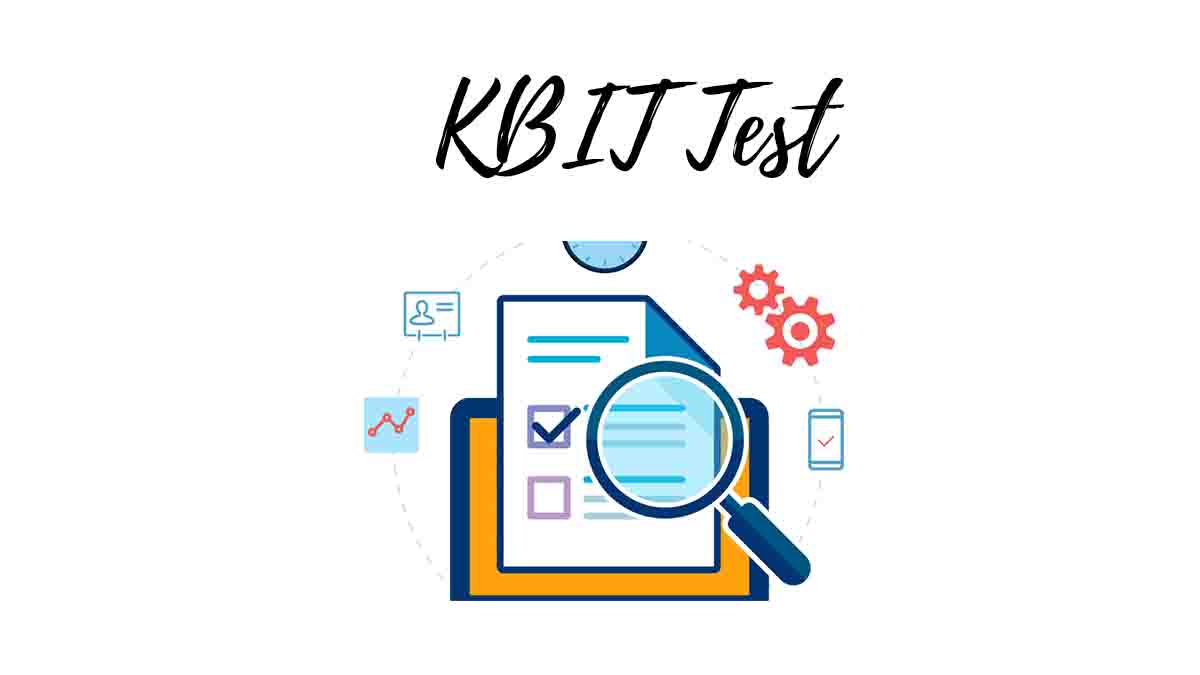We know you have searched the web to get a better understanding of the KBIT Test. On that note, your pursuit for a good guide of the KBIT Test just came to an end; why?
Because in this article, we’ll provide you with all the necessary information you need to know about this IQ test.
This article answers some of the most regularly asked questions about the KBIT Test:
- What is the KBIT Test?
- Who created the KBIT?
- What age group is eligible to take the KBIT Test?
- What contents are covered in the test?
- How does KBIT-1 differ from KBIT-2?
What is the KBIT Test?
The KBIT Test is the abbreviation for Kaufman Brief Intelligence Test, created by Nadeen Kaufman EdD and Alan Kaufman PhD.
The KBIT Test is a brief one that measures a person’s verbal ability and non-verbal intelligence.
As suggested by the name, the test is completed concisely; it takes not more than 30 minutes for a test taker to finish taking the test.
Of recent, most academic institutions have used the second version of the KBIT, KBIT-2, when taking this test.
Unlike the regular IQ tests, the KBIT Test does not contain visuospatial constructs. It cannot be taken by individuals who do not have a health degree or certificate.
On the other hand, the KBIT Test is administered to the individual test subject separately and is not typical to be administered for groups.
It considers a person’s cognitive progress and intellectual weaknesses and strengths by summing correctly answered questions into a raw score, then transforming them to standard measures based on the test’s overall standardized scoring model.
Moreover, the KBIT Test average score is 100.
Difference Between KBIT-1 and KBIT-2?
KBIT-1 is the original version of the KBIT, created in 1990 and administered until 2004.
After 14 years of being administered, the KBIT-1 was remodelled into the new KBIT Test, KBIT2.
KBIT-2 was developed as an update to KBIT-1 to maintain the strengths of the first version and correct the weaknesses.
The definitions section on the first version of the test was replaced with a verbal test that did not depend on reading cues.
Also, test makers have included pictures with colours, a new scale to measure verbal skills, an updated matrices section, and task standardization across all age groups.
What is the KBIT Test used for?
The test is highly specialized and is used to measure cognitive abilities, such as particular strengths and weaknesses of young children, and should be conducted by healthcare personnel.
In addition to being used to identify if a child is suitable for special programs, the test may also offer the following:
- A fast and rough calculation of a person’s intelligence.
- A means of examining the intellectual development of those who have previously undergone a cognitive test.
- Helps to find children who may be at high risk and need a more in-depth mental assessment.
- A general understanding of how people’s verbal intelligence compares to their non-verbal intelligence.
What is Age Group eligible to take the KBIT Test?
Although the test is in most cases administered to children within the school-aged, particularly the ones applying to schools with high competition, the KBIT offers valid scores for everyone within the age range of 4 to 90.
As much as the test is conducted in English, candidates who provide correct answers in Spanish will receive their total marks.
Moreso, as test participants age, the test becomes harder.
Breakdown of the KBIT Test
The KBIT-2 test comprises three core sections:
Verbal Knowledge:
There are verbal knowledge questions in which the test taker is presented with a number of images and asked to identify an image representing a word of vocabulary.
Here, a word is provided, and the test taker is required to identify the image of the word provided.
Matrices:
These are unique, non-verbal questions that test takers have not learned to work on in school.
The younger test taker is shown a picture and supplied with a number of possible answers to this type of question.
The young test taker is asked to indicate which image from the response options best suits the image above.
The matrices are administered as a 4 or 9 box matrix using images or numbers for older test-takers.
Matrix questions are among the most frequently asked questions on these types of tests.
Riddles:
With this particular question, test takers are provided with a few clues about the words they seek to find.
The puzzles start very quickly, such as: “What is made of metal, can be used for eating ice cream and soup, and is it round on at the top?” (A spoon); to something more complex like:
“What do you need when you go to the movies, you have to pay for it, and is allowed to be used only once?” (A ticket).
What can you get from a KBIT Test?
- Get a quick estimate of knowledge.
- Assessment of an individual’s verbal and non-verbal knowledge.
- Re-examine the intellectual status of a test taker who has in the past received a thorough cognitive assessment
- Filter for identification, students who could benefit from enriched or gifted programs, requiring a more comprehensive assessment
- Obtain a rapid evaluation of the intellectual capacities of adults in institutional settings, such as mental health centers, group homes, prisons, or rehabilitation centers.
The KBIT Test also offers:
- High validity and reliability.
- Cultural equity is reflected in standardization procedures and the selection of items.
- Attractive and materials that are simple to make use of.
- Scores that are assigned on a familiar scale where mean equals 100 and standard deviation equals 15.
Conclusion
KBIT often seems to appear like a difficult test, and therefore we recommend that you try to prepare your ward before the test.
Include puzzles into your daily activities and test your ward on vocabulary.
Awesome one; I hope this article answered your question.
Share this Information.
Editor’s Recommendations:
- How to Create a Balanced Plate: The Key to Healthy Eating
- How to Start a Virtual Book Club with Friends
- The Top Credit Score Hacks Every Young Adult Should Know
- The Pros and Cons of Rental Property as a Passive Income Stream
- Enhancing Your Clinical Psychologist Job Prospects with Professional Help
- The Impact of Graphic Design School on Your Future Earnings Potential
- 7+ College Scholarships for Muslim Students (FAQs)
- Flavor of the Month Scholarship 2024 (Requirements, FAQs)
- Vegetarian Scholarship (Requirement, Deadline, FAQs) | 2025
- John and Abigail Adams Scholarship 2022-2024 (Eligibility, Deadline)




